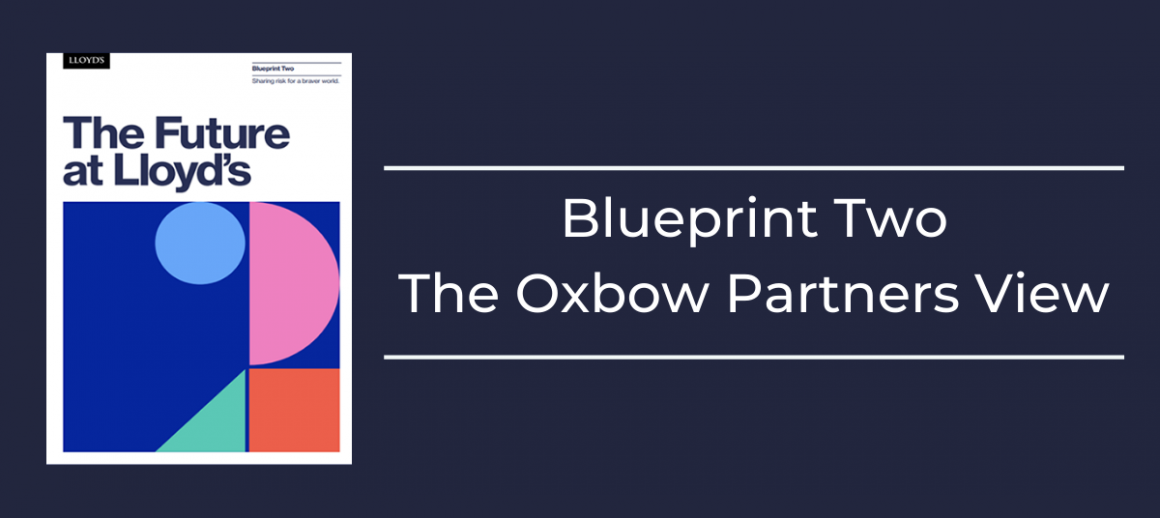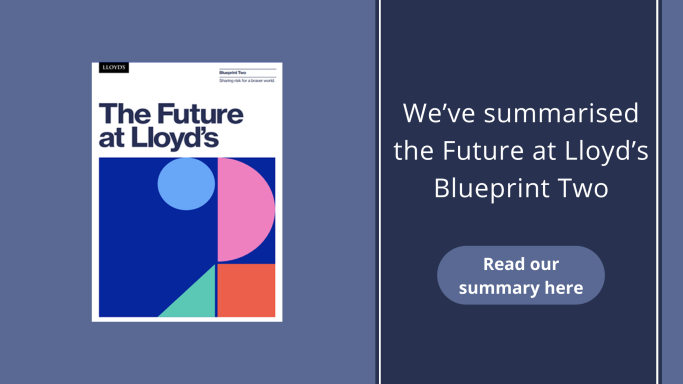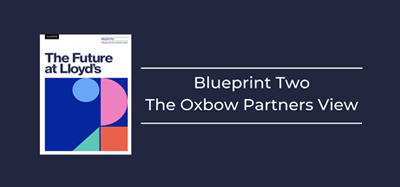Assumption 1: Lloyd’s must “control” the technology
The Oxbow Partners View: Tackled
Blueprint One was clear that Lloyd’s would control the end-to-end market technology. A resulting action was the equity investment into PPL in February 2020.
We have argued that Lloyd’s would be better placed to act as a marketplace and set standards for technology and data, which an ‘ecosystem’ of participants could access. In this latest update, Lloyd’s has chosen to do exactly this: whilst the market is still intending to develop PPL, the focus will move to setting data standards and building APIs to allow third party vendors to participate.
We welcome this move because Lloyd’s is not a technology shop, and becoming one would have taken a gargantuan leap. Indeed, taking a step back, we see Lloyd’s making more nuanced decisions with regard to technology, making buy vs. build decisions function by function.
Assumption 2: The technology investment will generate a c.14 percentage point cost reduction
The Oxbow Partners View: Tackled
In our previous analysis we challenged whether it was possible to achieve the Blueprint One expense ratio target – a reduction of c.14pp from c.39% in 2018 to c.25% by 2025. Our analysis showed that this would require a c.60% reduction in underlying administration costs.
In the latest update, Lloyd’s makes no mention of the 25% expense ratio target. Instead, the paper talks of an £800m marketplace opex saving (i.e. covering brokers and managing agents). This equates to a 3pp reduction in the expense ratio against 2019 figures.
We still have questions about the transition period. Whilst the new technology will help drive efficiencies, many market participants (and Lloyd’s itself) have legacy technology and processes. For a period of time, there could be additional costs as the two environments are run in parallel. There could be pain before the gain.
Assumption 3: Market participants will remain on board
The Oxbow Partners View: Partially tackled
We wondered whether Lloyd’s would be able to keep the market on side during this period of upheaval. This was particularly true of the brokers – the hand that feeds the market – who felt that Blueprint One would undermine their role in the market. In our discussions with them, we still see that more needs to be done in this area, recognising the different commercial models and priorities of the various constituents.
Nonetheless, we see the pivot to “getting covered” in the complex risk area and “recovering from loss” as evidence that Lloyd’s is listening to the market as it demonstrates a focus on the core processes that drive the most benefit and can cause the most pain.
Second, we think that it is helpful that Future at Lloyd’s is thinking more broadly than just the Lloyd’s market. Blueprint Two makes it clear that data standards need to market-wide (i.e. cover also the company market). This recognises that Lloyd’s is just one part of the London ecosystem, and that its success is inextricably linked to the broader success of London. Creating a new model for Lloyd’s but ignoring the business that is placed in the broader London Market would be a missed opportunity, and arguably ineffective.
Speaking to Oxbow Partners, Dave Matcham Chief Executive of the International Underwriting Association was supportive of the shift: “Blueprint Two reinforces Future at Lloyd’s position as a cross–market initiative, which will better support brokers and clients. This is excellent news for the market and our members.”
Assumption 4: Lloyd’s and the market can handle the magnitude of change
The Oxbow Partners View: Tackled (as much as it can be)
Finally, we challenged the ability of Future At Lloyd’s to push through such a huge volume of change. Our coverage over the last six months shows how much the programme has been flexed in light of new information, not least COVID-19.
Whilst the programme of work is still immense, this agile approach is welcome. It should ensure continuous focus on the highest value activities and an alignment of the programme to the change capacity.
Blueprint Two has some noticeable omissions
Whilst Blueprint Two feels like a positive step, it raises two questions for us.
First, there does not appear to be real progress on Lead / Follow – a major part of the Blueprint One – despite the fact that this is the area which arguably drew the most attention from the market. To date, two “follow-only” syndicates (Ki and Nephila 2358) have been approved and revised standards focused on portfolio management, portfolio underwriting, and pricing were published for consultation during the Summer. In 2021 Lloyd’s will release an updated Lead / Follow vision, conduct detailed analysis, and provide an update to the market. It is our understanding that Lead / Follow will continue, but be less prominent in the short term.
Second, the role of DXC and the joint ventures (XIS and XCS) have become uncertain. There is limited commentary on this, perhaps for obvious commercial reasons. It will be interesting to see how this plays out.
To speak to the team about your Future at Lloyd’s strategy, please contact us.






